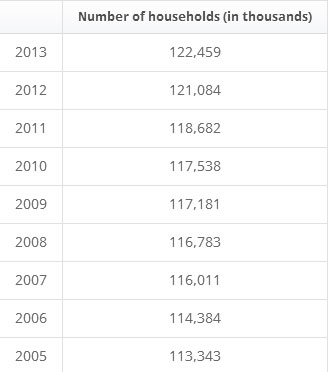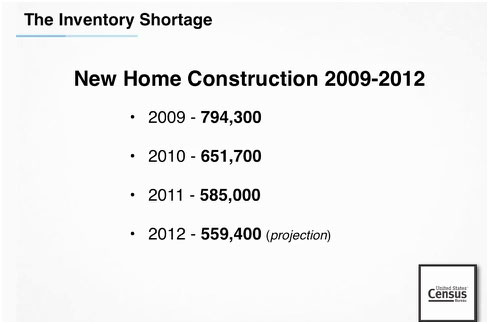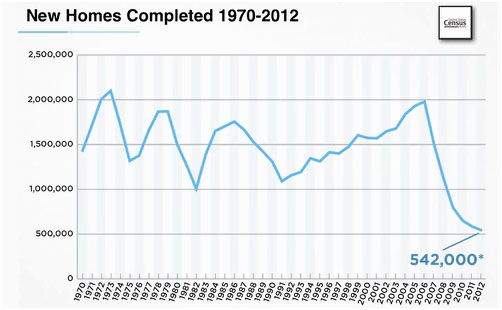I’ve been writing about this for over a year now and some of you may have experienced this firsthand and know that there is a shortage of inventory of homes and condos for sale. This is true not only here but in most parts of the country but we are definitely in a period of constrained inventory which began in early 2012 and has continued throughout the last 2 1/2 years. Although there is a slight improvement over last year, we are still at very low inventory levels and this is likely to continue for at least the next 1-2 years.
You might be wondering why this occurred and why it is still going on so I want to give you some information that will help in understanding this.
The following information was presented in 2012 by Alex Charfen of the Charfen Institute at a training session with Realtors and though that was 2 years ago the basic information will help you to understand what has been going on. (This is the same group who provided the training I did as a Certified Distressed Property Expert where I learned how to get short sales approved and closed in a much shorter time than is commonly seen.)
The following shows information from the Joint Center for Housing Studies of Harvard University and the key points to note are that from 1968 to 2008 the average number of homes built annually was a little over 1.5 million and the lowest number was a little over 1 million.
To understand the importance of this we also need to look at the nationally number of new households since that affects the need for housing. The crash in 2008 had quite an impact on this and lowered the number significantly but that is now reversing itself.
Since these were from 2012 I went online to look at what has happened since then to household growth and after 2010 the growth has gone from an average of around 1/2 million a year to around 1 1/2 million on average for the last 3 years. So the average stated above for the period through 2020 is probably correct. (this is from Statistica.com)
When the economy tanked in 2008 not only did the number of households decline dramatically, so did new residential construction. With less new households being formed we didn’t necessarily need to keep the previous pace of construction, but after the next 2 graphics I’ll explain how this led to our current situation.
From 2008 to 2010/2011 there was an overabundance of inventory so there really was not much need for new construction. But as the number of households began increasing that overage of inventory started to decrease. By 2012, with the increase in number of households back to the previously normal pace and new construction still at record lows – we began to see the start of the inventory shortage.
Since it takes quite a bit of time for new construction to get rolling again and for new homes or condos to be built, the availability of homes, condos and townhomes has not been able to keep up at the same pace as the increased demand in the last 3 years and because of this we have gone from 16 months inventory at the beginning of 2010 to as low as 2.84 months of inventory in May of 2013 in our local market.
As of the end of June 2014, there are still only about 75o,000 new housing units under construction nationally. This is a marked increase from 2011/2012 but with an increase in households from 2011 thru 2013 of nearly 4 million you can see that we are still behind and it will take a while to catch up.
In Pinellas County we have an added factor that amplifies this which is that we have very little land available for new construction. This is why you only see a few homes or townhouses being built as new construction and most of the new construction is located in the outlying areas of Tampa Bay such as in northeast Pasco County or east Hillsborough County in areas like Riverview and Brandon.
Based on all of the above information it will take at least 1-2 years to get to a point where inventory is not in such a dramatically reduced condition. Back in 2012 when this information was first presented, Mr. Charfen was laughed at because at that time there was way too much inventory available nationally and no one believed what he had to say. Now we are seeing this was correct and when you look at the current number you can see that unless there is an unexpected negative economic event there will continue to be an inventory shortage for a while.
If you want to know what this means for you – read my other articles for this month which discuss the effects of the inventory shortage for sellers and buyer.







